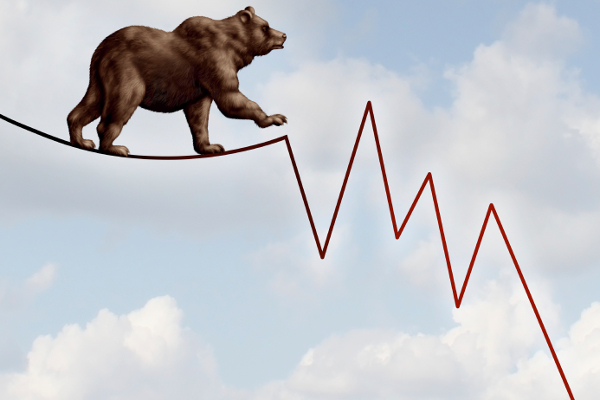Which phase of the bear market are we in?
The current state of the markets reminds us that ‘there’s no such thing as a bear market without a b…
12th May 2020 15:14
by Tom Bailey from interactive investor
The current state of the markets reminds us that ‘there’s no such thing as a bear market without a bear market rally’.

Many investors are understandably slightly confused by the US market right now.
The US and global economies are in freefall, with GDP figures expected to show the largest drop in output on record. Meanwhile, the US unemployment rate has surged to Great Depression levels.
But markets seem to be roaring. While markets went into full panic mode in March, they have since staged a strong recovery. The US market is now back in bull market territory when measured from March’s lows.
- Investors withdraw record £10 billion from funds in March 2020
For some, this simply reflects the fact that markets are forward-looking and are now looking to a post-coronavirus world. For others, the strong recovery is the result of aggressive intervention from the US Federal Reserve, which has expanded quantitative easing to previously unthinkable levels.
Another consideration, as I’ve previously written, is that the sell-off was not the result of a collapse in a previously leading sector or the bursting of an asset bubble (as was the case in 2001 and 2008).
According to Eoin Murray, head of investment at Federated Hermes, the current state of the markets reminds us that “there’s no such thing as a bear market without a bear market rally”.
Based on his study of previous markets, he says it is best to view them as going through three discrete phases – and we are currently stuck in the second phase.
The first phase, says Murray, is the “initial shock”. During this period markets plummet, correlations between previously uncorrelated assets rise as investors scramble for liquidity, and central banks step in to try and stave off (some of) the damage. This describes March this year.
During the second phase, “the consequences”, investors consider the second-order effects, perhaps sparking a “brief false dawn rally”.
However, as they review the problem, further fear can resurface and markets may once again tumble. Murray says: “Phase two can recycle multiple times and this is where I believe we are now.”
He notes: “since the mid-March lows, US large-cap stocks have gained back around 56% of the losses, technically lifting them back into a new bull market, even if we’re still in a world that is defined by extreme uncertainty for the global economy and on the outlook for corporates.”
However, false dawn rallies have been a feature of past bear markets and this one should not be any different, Murray argues. He says that current forward-looking multiples look too high, relative to history and given the likely loss of earnings companies face due to the pandemic and lockdown.
The third and final phase, says Murray, is the “post-bear phase”. He describes it as occurring when “investors take pause to reflect on a longer-term outlook and begin to contemplate the precise nature of the changes and fractures that will follow.”
For this phase to start in the current crisis, there would need to be a better understanding about the potential for herd immunity, mass testing capabilities and/or clear progress towards the development of a viable vaccine, Murray believes.
This article was originally published in our sister magazine Money Observer, which ceased publication in August 2020.
These articles are provided for information purposes only. Occasionally, an opinion about whether to buy or sell a specific investment may be provided by third parties. The content is not intended to be a personal recommendation to buy or sell any financial instrument or product, or to adopt any investment strategy as it is not provided based on an assessment of your investing knowledge and experience, your financial situation or your investment objectives. The value of your investments, and the income derived from them, may go down as well as up. You may not get back all the money that you invest. The investments referred to in this article may not be suitable for all investors, and if in doubt, an investor should seek advice from a qualified investment adviser.
Full performance can be found on the company or index summary page on the interactive investor website. Simply click on the company's or index name highlighted in the article.